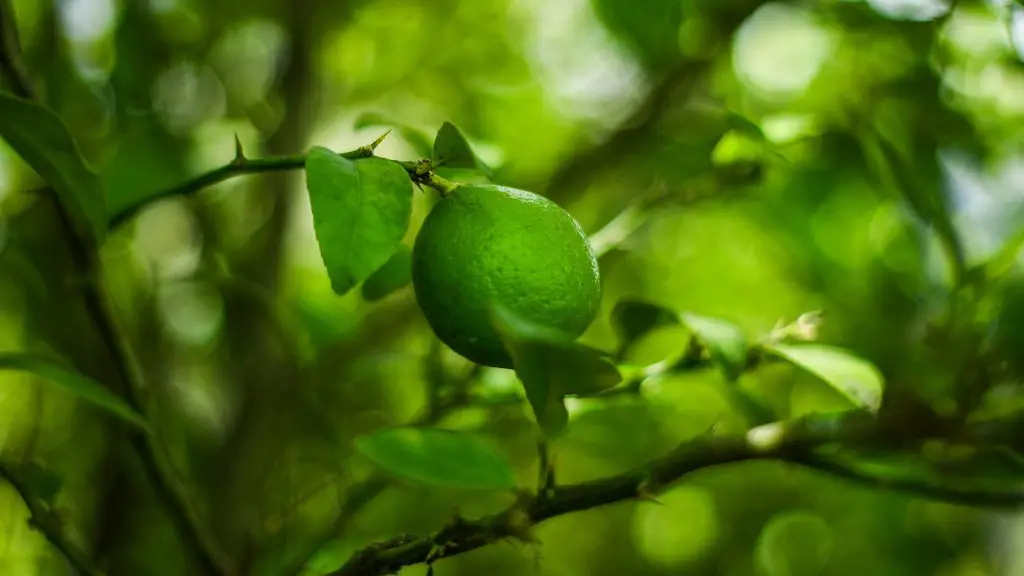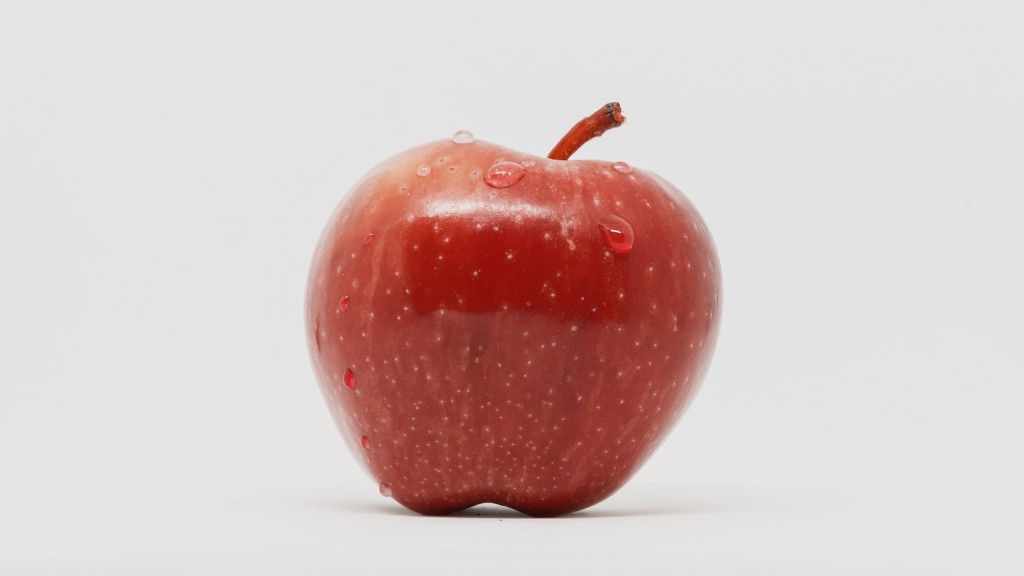Can you have an indoor lemon tree? Yes, you can! An indoor lemon tree is a great addition to any home. It’s easy to grow and provides delicious fruits that can be used in a variety of dishes. Plus, it looks beautiful displayed in a sunny window or patio.
Growing an indoor lemon tree requires regular care and attention. Water it regularly, and make sure it gets plenty of sunlight. If possible, keep it in a south-facing window, so it will receive the most sunlight. Also, make sure to regularly check the soil, and add fertilizer when necessary.
An indoor lemon tree can make a great housewarming gift. Or even better, a gift to yourself! A small lemon tree can easily fit in a pot on your windowsill or porch. And if you’re patient, you can even watch it slowly grow into a full-sized tree.
It’s important to remember that indoor lemon trees need pruning. Pruning helps to maintain healthy growth, as well as keep the tree from growing too large for its pot. Fruiting trees like the lemon tree also need pollinating, so be sure to give it a gentle shake every now and then to help get the process going.
Lemon trees grown indoors can produce fruits in as little as two years. And if you take good care of it, your tree could continue producing for as many as thirty years. So don’t be afraid to give your indoor lemon tree love and attention. It will thank you with delicious fruits.
An indoor lemon tree can be a great addition to any home. With regular care and attention, it will thrive and produce plenty of sweet and juicy lemons. So, if you’ve got a sunny spot in your home, why not bring a little bit of sunshine in with an indoor lemon tree?
How To Get Started With An Indoor Lemon Tree
If you want to bring an indoor lemon tree into your home, there are a few things you’ll need to consider. First, you’ll need to choose the right kind of tree for your situation. Depending on the climate you live in and the space available, you may want to opt for a smaller variety. Many popular citrus fruits, such as lemons, limes and oranges grow much better in pots than in the ground.
Until your tree is established, it’s best to keep it in a pot. This will give you more flexibility to bring it indoors and outdoors, depending on the temperature and weather. When your tree is about three years old, it should be ready for a larger pot. A larger pot will allow more room for the tree’s roots to grow, as well as help it keep more moisture and nutrients.
You’ll also need to make sure your tree is getting the right amount of sunlight. An indoor lemon tree should get between 6 and 8 hours of full sun per day. A south-facing window is ideal, but if this isn’t available, try to pick the sunniest spot in the house. For maximum growth, try to keep the tree near the windowsill or a protected patio area.
When it comes to watering, it’s imperative to keep the soil moist. An indoor lemon tree will need to be watered at least once per week. As a general rule of thumb, the soil should never be allowed to fully dry out. During summertime, you may need to water more often, as dry soil can slow down the growth of your tree.
It’s also important to fertilize your tree periodically. A schedule of every six weeks or so should be sufficient. For the best results, use a balanced liquid fertilizer. Be sure to follow the instructions on the packaging, and don’t forget to water before and after applying the fertilizer.
Common Diseases Of Indoor Lemon Trees
Like all plants, indoor lemon trees are prone to certain diseases and pests. Two of the most common are citrus greening (HLB) and citrus canker. Both diseases can be caused or exacerbated by environmental factors. The best way to prevent these diseases is to keep the tree healthy. Adequate sunlight and water, as well as regular pruning and fertilizing, should help reduce the risk of infection.
Among the pests that can damage an indoor lemon tree, citrus whitefly is one of the most widespread. Allowing your indoor tree to come into contact with outdoor plants is one of the most common ways these pests can enter the home. To prevent them from attacking your tree, you should regularly check for the presence of their eggs and larvae. Physical removal, as well as chemical pesticides, can be used to eradicate the problem.
Another type of pest that can affect an indoor lemon tree is mealybugs. These small, white bugs tend to be attracted to the new yellow growth of the tree. To prevent them from damaging your tree, you should check the tree’s leaves regularly. If you notice any mealybugs, you can remove them manually or with a cotton swab soaked in rubbing alcohol.
Finally, other insects like Spider mites, thrips and aphids can also affect an indoor lemon tree. To prevent these pests from attacking your indoor tree, you should monitor it regularly. Be sure to check the underside of the leaves, as this is where these pests tend to live. A single pesticide spray won’t always do the trick, so you may have to treat the tree multiple times.
Tips For Keeping An Indoor Lemon Tree Healthy
Keeping an indoor lemon tree healthy requires regular maintenance. Pruning your tree regularly can help to maintain its shape and keep it from overgrowing its pot. Additionally, check the soil regularly and add fertilizer when necessary. Also, pay attention to the tree’s water needs. With proper care and attention, your indoor lemon tree should become an attractive and productive asset to your home!
As mentioned before, an indoor lemon tree needs lots of sunlight. Placing it in a south-facing window will give it the most light. If a south window isn’t available, try to place the tree in the sunniest place in your home. Just make sure to keep it away from any direct drafts of cold air.
It also helps to rotate your indoor lemon tree every so often. Rotating it occasionally will give leaves on all sides of the tree an equal opportunity to absorb sunlight. And if you use artificial lighting, make sure to rotate the tree to give each side an equal amount of light.
As for watering and fertilizing, you’ll need to know your tree’s specific needs. Depending on the size and age of your tree, its watering schedule may vary. And when it comes to fertilizing, don’t be afraid to read the instructions on the packaging and follow them to the letter.
Finally, remember to pay attention to your indoor lemon tree’s health. If you notice any signs of distress, don’t hesitate to investigate. Frequent signs of distress may include yellowing leaves, spotty growth and stunted fruit production. If you keep an eye on your tree and take care of it, it should continue providing you with delicious, nutritious lemons for many years to come.
Tips For Harvesting Lemons From An Indoor Lemon Tree
Harvesting lemons from an indoor lemon tree can be tricky. If you harvest too soon or too late, you may find that the fruit you get is not sweet enough or not sour enough. You don’t want to over- or under-harvest your tree, so it’s important to know the signs of when the fruit is ready to be picked.
As a general rule of thumb, lemons are usually ready to be harvested when they begin to turn yellow. If you don’t see any yellow lemons, check the underside of the tree’s leaves, as this is where lemons tend to hide. You should also pay attention to the tree’s weight, as this can indicate when the tree is ripe and ready for harvesting.
When harvesting lemons, it’s important to use caution. Never pull the lemon off the tree, as this can damage the stem and inhibit further growth. Instead, carefully twist the fruit off the tree gently. This will help keep the stem attached to the stem, ensuring that the tree doesn’t suffer any lasting damage.
Sometimes, lemons may be hard to pick due to nearness to leaves or branches. Discerning when to pick the best-looking ones can be labor-intensive, particularly in cases where you need to pick the lemons one at a time. Consider using long-handed pruning shears to clip off the lemons that you want. This tool should help save you both time and energy.
After the lemons are harvested, you should clean them promptly. To make sure that the lemons don’t start to rot, you should store them in a well-ventilated container in the refrigerator. You don’t want any fungi growing on the fruit, so make sure to check every few days to make sure the lemon skin is still intact.
Preserving Lemons From An Indoor Lemon Tree
There are numerous ways to preserve lemons from an indoor lemon tree. Lemons can be pickled, frozen, canned or dehydrated. Interestingly, many of these processes can also be combined for additional flavor. Most of these methods require fresh lemon juice and zest, as well as some extra ingredients like salt and sugar.
Pickling is a great way to preserve lemons. All you need to do is combine the lemon juice and zest with vinegar, water and salt. The pickled lemons can then be used in a variety of dishes, from savory to sweet. Pickled lemons also have a long shelf life, and are therefore a great way to make sure you don’t waste any of your lemons.
Frozen lemons can also make for a great way to preserve their flavor. To freeze your lemons, simply wash, dry and slice them, then place them in an airtight container and store in the freezer. Frozen lemons can then be used in smoothies, muddled into cocktails or used in any other recipe that calls for lemon. It’s important to note, though, that freezing your lemons will likely change their texture and flavor, so make sure to taste-test before using.
For a longer shelf life, consider canning your lemons. Start by washing and drying the lemons. Then, slice them in half, remove any seeds and place them in a jar with a few tablespoons of salt, lemon juice and water. Process the jar in a boiling-water canner for the recommended amount of time, and you’re all set! Canned lemons will last months, or even years.
Finally, you can also dehydrate your lemons. To do this, you’ll need to start by slicing the lemons as thin as possible. Then, place the slices on a baking sheet and dry in an oven until they’re completely dry and pliable. Dehydrated lemons can be stored in an airtight container and placed in a dark, cool area for several months. Dehydrated lemons can be sprinkled into salads, soups and pasta dishes, adding a hint of intense citrus flavor.


